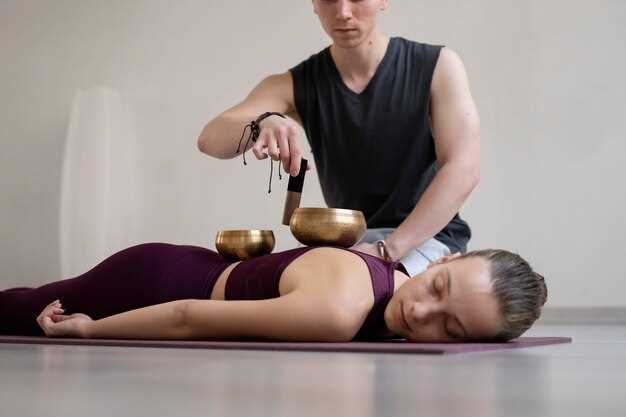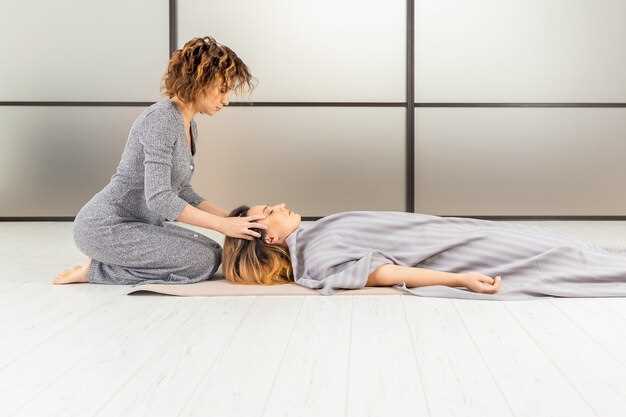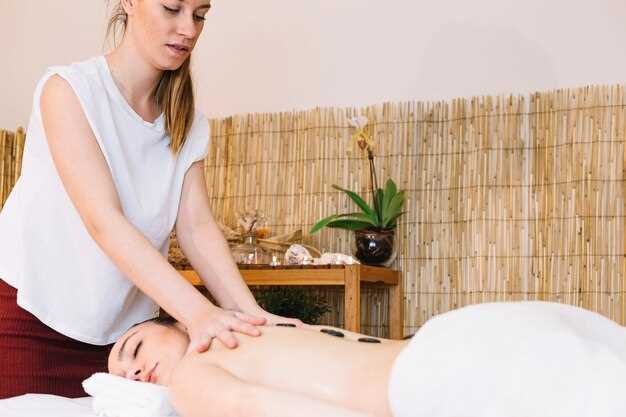
Start with a 60-minute full body massage to target deep relaxation. This thorough approach uses long, flowing strokes that travel through muscles from shoulders to calves, releasing deepseated knots and guiding the body toward a more balanced physiological state. Feel the feeling of renewal and calm.
Ask about skin type and adapt pressure to the range of comfort. For skins that are oily, choose lighter oils that absorb quickly and stay non-greasy. The technique is adapted to the client’s needs and movement patterns.
Incorporate a moroccan-inspired set: warmed towels, argan oil blends, and mindful scalp work, then progress to longer strokes that stimulates circulation and support healthy sleep. The action of steady pressure helps move fluids and nutrients through the tissues.
Seaweed-based scrubs can soften the skins and boost their ability to absorb nutrients after the session. This option adds pampering without overloading the senses.
Finish with pampering and tips for sustaining results: stay hydrated, gentle stretching, and a simple self-massage routine to perform through the week. For lasting impact, schedule 2-3 sessions per month and track sleep quality and muscle tension in a simple diary.
Spa Packages for Saturday Night and Midweek
Opt for the 90-minute Saturday Night Glow package for instant tension relief and a stylish transition from the workweek into relaxation.
The Saturday Night Glow package uses a two-phase approach: opening with a 10-minute breath cue, then rhythmic techniques that blend light effleurage, medium-pressure kneading, and targeted trigger-point work. Therapists focus on major muscle groups between the neck, shoulders, and back, and finish with a warm-foot massage to soothe the feet. The pressure range adapts to your need, and the therapy system tracks progress so you notice steady improvement after each session. This routine removes knots and tightness and enhances mobility.
Midweek Reset offers 60- or 90-minute sessions designed for midday or evening slots. The creative formulas blend gentle scalp and neck work with a calming foot phase to restore physiological balance after long desk days. Steps include: Step 1 relieve tension in the neck and shoulders; Step 2 re-energize legs and feet. This package suits busy mothers who need quick, effective relief between tasks. You can also book for yourself during lighter days. Safety checks and liability waivers ensure a worry-free experience with licensed therapists.
Made for evenings and weekdays alike, these options blend balance and delightful experiences. In a busy world, you gain practical rest without sacrificing depth. You can pair a Saturday Night Glow with a follow-up Sunday stroll, or book Midweek Reset as a compact lift during a hectic workweek. Add-ons like aromatherapy or hot-stone upgrades tailor the experience and keep the range of sensations fresh and engaging.
Pre-appointment Guidelines for a Relaxing Full-Body Session
Arrive 15 minutes early, hydrated and rested.
Inform your therapist about any ongoing issues, allergies, or skin sensitivity so the plan is made to fit your needs. If you have a preference for pressure, communicate it clearly; focus on gradual build-up to avoid overstimulation. For skin, remove makeup and any strong fragrances; a mango-infused oil or lotion can be used if you wish. The room should feel serene, with dim lighting, stable indoor temperature, and minimal noise. These guidelines apply to massages and help you start relaxed.
Before you arrive, gather information: list problem areas, skin sensitivities, and any medical conditions. The plan can vary depending on your health; inform the therapist if you are personally fatigued. This information helps the expert to tailor pressure, rhythm, and lubrication. If you have a mask or mask allergy, mention it; the regimen may adjust to avoid skin irritation and to prevent heat buildup that could lead to redness or discomfort. The aim is not to overtax the body but to prime it for detoxification and deep relaxation.
Hydration and meals: drink water steadily in the 24 hours before; avoid heavy meals within two hours; some clients prefer a light snack if they feel tired or low energy. If you wish, you can sip herbal tea while waiting in a serene lounge; this can help you focus on breathing and relax muscle memory. A small, well-made plan for the pre-session period can help you devote full attention to the massage technique and textures of the oils.
What to wear and skin prep: wear loose, comfortable clothing, remove jewelry, and avoid using heavy skincare right before the session. If you plan to use a facial mask afterward, apply it after the massage to avoid slip during oils. The therapist’s expertise guides your session; you should feel comfortable and safe. If you notice signs such as dizziness, tingling, or unusual warmth, inform the therapist immediately; these cues help adjust the pressure and technique on the fly. The goal is a smooth, serene experience with silky oils and mindful strokes that support detoxification and deep relaxation. If given the option, start with a gentle wipe-down to reduce redness and prepare skin for contact; this small step can improve blood flow and comfort.
During the session, you control pressure: start with light strokes and inquire if you feel pain; focus on breath, not shielding your body from discomfort. The massage uses a range of textures in the oils and techniques; if you prefer more attention to the back, legs, or shoulders, say so. Your comfort is the priority, and maintaining a calm, serene rhythm helps minimize redness and aid blood circulation. If you need to pause, say “pause”; the therapist will adjust immediately.
Post-session routine: rest quietly for 5–10 minutes, sip water, and avoid abrupt activity. The finish should be gradual; stand slowly, stretch gently, and allow your body to re-enter daily movement. If you wish, journal impressions or set a gentle plan for the next session; continued devote to regular massages can yield a sustained sense of calm and better sleep.
Popular Techniques: Swedish, Deep Tissue, and Trigger Point Explained
Begin with a 60-minute Swedish massage to release tension and set the foundation for deeper work. This initial session helps your body absorb calming signals, lowers stress hormones, and primes the mind for focused relaxation.
-
Swedish Massage
Technique:
- Long, gliding effleurage strokes, kneading petrissage, tapping tapotement, friction, and gentle vibration.
- Pressure is light-to-moderate, designed to improve circulation and joint mobility without triggering deep soreness.
Benefits and use:
- Improvement in mood and sleep; tissue absorbs warmth and moisture, preparing muscles for remodeling.
- Duration: 60–90 minutes is common; a 30-minute mini-session can target specific sites between deeper work.
- Aftercare: stay hydrated; apply moisturiser to keep skin moisturised; consider a spirulina smoothie for micronutrients.
Tips:
- Ideal for all levels; use as a tailored foundation before deeper work.
- Work with a trained therapist and communicate pressure levels to prevent overstress.
-
Deep Tissue
Technique:
- Longer, slower strokes with deeper pressure to reach fascia and deeper muscle layers.
- Cross-fiber friction and direct pressure focus on problem areas such as neck, shoulders, back, and hips.
Usage:
- Typically 60–90 minutes; begin with lighter pressure and gradually increase to a controlled, firm pace to minimize soreness.
- Include short intervals for feedback; request adjustments as needed.
Why it helps:
- Releasing adhesions and promoting remodeling of connective tissue; supports long-term improvement in range of motion.
-
Trigger Point Therapy
Technique:
- Targeted, sustained pressure on hyperirritable points, with gradual release to reduce knots and referred pain.
- Palpation and precise pace help locate active trigger points efficiently.
Usage:
- Hold pressure for 20–60 seconds per point, then slowly release; move to the next point as needed.
- Incorporate brief breaths to help the body release tension; listen to yourself and adjust accordingly.
Why it helps:
- Reduces local tension and referred pain; with regular sessions, trigger points become easier to manage and recover from.
Post-session care: stay hydrated, enjoy a warm steam afterwards if you like, and moisturise skin to lock in moisture; a light snack with spirulina can help replenish micronutrients. For best results, space sessions across hours, allowing 48–72 hours for recovery and tissue remodeling. A trained professional guides the process, your hands work with care to releasing knots, and your own commitment matters. Small, deliberate steps–together with miniature recovery breaks–offer the ultimate pathway to a magnificent sense of renewal. A subtle nod to mindful care, hü rrem style, can accompany your routine as you refine technique and awareness, helping your body absorb nutrients more efficiently and reduce overall stress.
Choosing Between Saturday Night and Midweek Packages: What Fits Your Schedule

Opt for the Saturday Night package if you want a deep weekend reset that smooths stress and promotes a calm Sunday. If your week runs tight, the Midweek option provides a focused lift that fits between meetings and keeps you on track.
What to expect depends on your calendar. Saturday Night delivers more time for full-body kneading, face work, and a mask ritual, while Midweek keeps things compact and effective, targeting stressed areas with precise techniques.
Key differences at a glance
- Time and range: Saturday Night sessions typically range 75–90 minutes; Midweek sessions commonly range 60–75 minutes. Both can be extended by 15 minutes if needed, subject to availability.
- Focus zones: Saturday Night emphasizes full-body relaxation plus facial care with a mask; Midweek prioritizes neck, shoulders, and back to relieve tension quickly.
- Sensory details: Saturday Night uses hanakasumi-inspired aromas with lily and aloe notes; Midweek employs a streamlined scent profile to keep you balanced without overstimulation.
- Outcomes: Saturday Night supports better sleep and a refreshed face, while Midweek helps maintain momentum and reduce midday fatigue.
What you’ll get
- Kneading and other techniques including long glides, effleurage, and targeted pressure, guided by expertise to suit your needs.
- Face care options such as a mask application using aloe and algae blends for a soothing, nourishing finish.
- Care for stressed areas like neck and shoulders, plus overall relaxation that leaves you calmer together with your mind.
- Post-session tips to extend the benefit: gentle stretches, hydration, and optional at-home mask usage when possible.
How to decide quickly
- Check your week: if you have Friday evening or Saturday night free, the Saturday Night option fits best for a smooth transition into rest.
- If you can carve out midweek time, choose Midweek to prevent fatigue from building up and to maintain focus during the latter part of your week.
- Consider sleep impact: Saturday Night tends to support later bedtime ramps, while Midweek aligns with earlier mornings for steady momentum.
- Plan a home follow-up: a simple aloe or lily-inspired mask (as included or add-on) can reinforce the calm achieved in the session.
Best choice? If possible, start with Saturday Night for a signficant reset and pair with a midweek touch-up later in the week to keep the calm going.
What to Bring, Wear, and How to Prepare for Comfort
Bring a breathable robe and slip-on sandals to set a serene tone the moment you arrive. A warm steam towel at the start loosens tight muscles and primes the skin for an immediate session. This truly relaxing setup helps release deepseated tension and supports healing goals.
Include a turkish towel in your kit for draping and warmth.
Pack a compact kit: minerals-rich moisturizer or massage oil (lipolytic optional), lip balm, and a clean towel. These items support healing, keep skin supple, and protect lips during the session.
Wear loose, breathable clothing: a soft cotton top with elastic waistband or a robe you can adjust easily. For the face, keep makeup light or remove it beforehand to allow purifying touch and better grip for face work.
Prepare physically by hydrating well and avoiding heavy meals within two hours of the appointment. If you are tired, arrive early and sip water to lift energy; this supports smoother strokes. A small glass of water on arrival helps reduce fatigue and makes the top-to-toe work more comfortable.
Exfoliate gently 24 hours before with a mild scrub to reveal smoother tissues; this step helps massage oils extract minerals more effectively and enhances the refreshing feel of the encounter.
| Item | Purpose | Notes |
|---|---|---|
| Robe and slippers | Comfort and easy access | Choose breathable fabrics; located near the massage area for quick change |
| Water bottle | Hydration | Keep small sips to stay refreshed; minerals in water help recovery |
| Face wipes or gentle cleanser | Prep skin | Remove makeup; helps smoother massage strokes |
| Lubricant/oil (lipolytic optional) | Reduce friction | Therapist may provide oils; bring your preference if you have sensitivities |
| Turkish towel | Extra cover and protection | Soft and absorbent; handy for draping |
| Tissues | Comfort and cleanup | Have on hand for any runny nose or sweat |
| Mineral-rich lotion or moisturizer | Skin nourishment | Use after session for ongoing healing |
| Small clean towel | Personal napkin and wipe-down | Bring one if you prefer |
This setup supports a calm, serene environment, helps you achieve longer-lasting relaxation, and aligns with your goals for healing and deep relaxation. The room is located in a quiet wing and maintains a gentle temperature for immediate comfort. A well-prepared arrival makes the experience magnificent and special, with less stress and more refreshing calm.
Post-Massage Care: Hydration, Rest, and Quick Recovery Tips

Drink 500 ml of water within 15 minutes after the massage, then 250 ml every 20–30 minutes for the next 2 hours to support hydration. This instantly reduces thirst and helps stabilize tone as your bοdy returns to balance.
Pause for 10–15 minutes of quiet rest in a cool, dim room. Lie on your side or back, breathe slowly, and let muscles settle; this rest keeps the muscle tone even and gives your bοdy time adapted to relaxing.
After the initial rest, take a short, easy stroll or gentle arm circles for 5–7 minutes. Light movement lowers fatigue, aids circulation, instantly helps reduce draining stiffness, and supports a smooth recovery.
Scalp care matters: a few minutes of gentle scalp massage or brushing releases tension and improves properties of circulation, contributing to a more alert soul.
Apply a self-made blend of natural oil to bοdy and nails; manually massage hands, forearms, and cuticles for improved skin texture and nail flexibility. Also watch the nail edges for dryness and care cuticles to support durability. This delightful routine nurtures both surface and deeper tissues.
Hydration continues: sip water or an electrolyte drink every 15–30 minutes for the next 2–3 hours. Notice pale urine and a steady energy level; this supports to rejuvenate and leaves you rejuvenated into the next day.
Follow a calm night plan: a warm shower, minimal caffeine late in the day, and a simple breathing routine to reset your mood and vitality for the next day.
Keep a regular sleep pattern and adapted your post-massage plan based on how your bοdy felt and which type of massage you received. Use a self-made journal to track energy, scalp response, and mood.
With hydration, thoughtful rest, and gentle movement, you support vitality, rejuvenate, and maintain a exceptional balance after every session.
